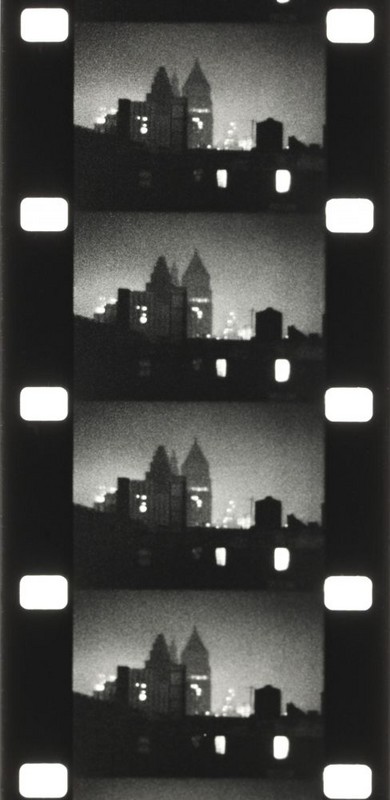Hans Richter's Cities. Berlin - Moscow - New York
28 Sep 2013 - 06 Jan 2014

Peter Hutton, photogramme extrait de New York Portrait: Part I [Portrait de New York : Partie I], 1978-1979
Canyon Cinema
Centre Pompidou, Musée national d’art moderne, Paris
© Droits réservés
© Centre Pompidou, MNAM-CCI, Dist. RMN-Grand Palais / image Centre Pompidou, MNAM-CCI
Canyon Cinema
Centre Pompidou, Musée national d’art moderne, Paris
© Droits réservés
© Centre Pompidou, MNAM-CCI, Dist. RMN-Grand Palais / image Centre Pompidou, MNAM-CCI
HANS RICHTER'S CITIES. BERLIN - MOSCOW - NEW YORK
28 September 2013 - 6 January 2014
Curator :Philippe-Alain Michaud, Curator, Centre Pompidou, Musée National d’Art Moderne, head of the experimental cinema department.
As a continuation of Hans Richter. A journey through a century six portraits of cities by major artistic and experimental filmmakers are shown in Galerie 3. From Europe in the 1920s to the United States of the post-war years, they recreate the modern urban environment in which Hans Richter lived and which he also represented in his films.
Between 1921 and 1922, László Moholy-Nagy wrote the scenario for Dynamic of the Metropolis, a film that would never be made. In his opening to the scenario he notes that "the elements of the visual have not in this film an absolute logical connection with one another; their photographic, visual relationships, nevertheless, make them knit together into a vital association of events in space and time and bring the viewer actively into the dynamic of the city."
These city symphonies were an increasingly popular genre in Europe and the United States in the 1920s. Their structure observes the same rules as the urban fabric itself, with diagonal frames, shifting perspectives, high-angle and low-angle shots giving viewers an unprecedented physical experience of space.
Thus the advent of the modern metropolis coincided with a new experience of the filmic image, and artist-filmmakers highlighted this analogy in their work: underground train tracks, tramlines and electric lines criss-crossing the sky, all symbols of the modern city, become mirror images for the two fundamental properties of film which are advancement and projection.
28 September 2013 - 6 January 2014
Curator :Philippe-Alain Michaud, Curator, Centre Pompidou, Musée National d’Art Moderne, head of the experimental cinema department.
As a continuation of Hans Richter. A journey through a century six portraits of cities by major artistic and experimental filmmakers are shown in Galerie 3. From Europe in the 1920s to the United States of the post-war years, they recreate the modern urban environment in which Hans Richter lived and which he also represented in his films.
Between 1921 and 1922, László Moholy-Nagy wrote the scenario for Dynamic of the Metropolis, a film that would never be made. In his opening to the scenario he notes that "the elements of the visual have not in this film an absolute logical connection with one another; their photographic, visual relationships, nevertheless, make them knit together into a vital association of events in space and time and bring the viewer actively into the dynamic of the city."
These city symphonies were an increasingly popular genre in Europe and the United States in the 1920s. Their structure observes the same rules as the urban fabric itself, with diagonal frames, shifting perspectives, high-angle and low-angle shots giving viewers an unprecedented physical experience of space.
Thus the advent of the modern metropolis coincided with a new experience of the filmic image, and artist-filmmakers highlighted this analogy in their work: underground train tracks, tramlines and electric lines criss-crossing the sky, all symbols of the modern city, become mirror images for the two fundamental properties of film which are advancement and projection.
